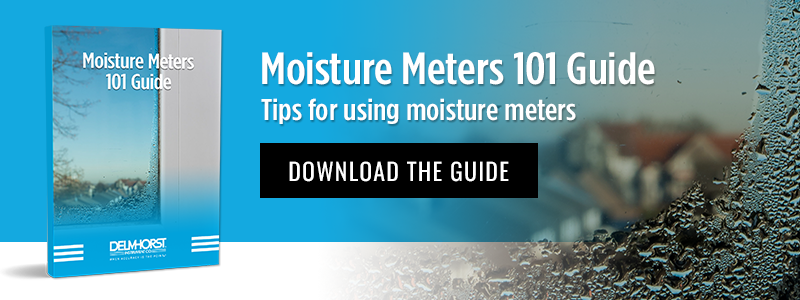
If you’re working on household DIY projects in the winter, and especially in the colder northern states, then you might be familiar with the way that extreme cold can affect sensitive materials.
For example, wood can shrink in extreme cold, causing warpage and other deformities in wooden building materials.
However, what you might not be aware of is how low temperatures can affect the tools that you use to complete your do-it-yourself projects. Simple tools, like hammers and saws might not be affected much, but your electronic measuring devices and power tools may have parts that can be damaged by temperature extremes.
Moisture meters, like any electronic device, can be susceptible to the effects of exposure to extreme environmental conditions such as intense cold or moisture. This can cause a woodworking moisture meter to return bad moisture readings, hampering your ability to accurately measure and control moisture on a DIY woodworking project.
With this in mind, how can you protect your woodworking moisture meter from the cold so that it continues to be useful to you throughout the job?
Here are a few tips to help you out:
1: Store Your Meter in a Temperature-Controlled Environment
The first piece of advice for keeping any sensitive tool safe from harm is to keep it in a cool, dry environment. However, sometimes a cool, dry environment isn’t enough, particularly in winter.
Locations such as a tool shed or garage that lack any kind of temperature regulation can become veritable freezers in winter, exposing all of the tools stored inside to the cold.
When you’re not using your moisture meter, keep it in an area of the house where it will be in a temperature-regulated environment, but is still safe from exposure to excess humidity and other potential sources of damage.
This will help keep your meter protected from the cold if the outside temperature drops severely overnight.
2: Pack Your Meter in its Case When Not Actively in Use
Aside from keeping your meter in a temperature-controlled environment when not actively in use, take the carying case for your meter with you when you’re taking readings.
Between readings, when you are using other tools and handling other tasks, placing the meter in its carrying case can help limit the amount of exposure it has to the cold. As a side benefit, this can help to prevent other forms of damage as well, since the case can also protect the meter from falling objects and debris that might hit it while you’re working on your wintertime DIY project.
When you’re not using your meter, keeping it in its case helps to protect your device while it’s in storage, preventing exposure to contaminants for the days, weeks, or months that your meter sits in storage waiting for use in your next DIY project.
3: Check Your Meter’s Calibration Periodically While Working
If you want to make sure that your meter is still giving you accurate readings while you’re working, be sure to check the meter’s calibration from time to time. Depending on the make and model of wood moisture meter you’re using, this can be done in several different ways.
One method involves using a moisture content standard (MCS) to check your moisture meter’s readings. These devices are built to provide a quick check of the meter’s accuracy by using a set electrical resistance to ensure that a meter tested on the MCS displays a specific number. If the reading is more or less than that number, you know your meter is not out of calibration.
Some meters have a built-in calibration check that allow you to test the meter’s accuracy with the push of a button. You push the calibration check and the screen displays a pre-set number using a circuit inside the meter that reproduces the function of an MCS.
By testing your calibration once every now and then before taking a reading, you can see if the cold is beginning to affect the meter’s accuracy, and by how much.
4: Avoid Moving Your Meter from a Cold Area to a Hot One Suddenly
One last piece of advice is to avoid moving your meter from one temperature extreme to another too quickly. Metal components in your moisture testing device may slightly expand or contract with changes in temperature, and sudden shifts can cause an issue as the materials in the meter go from one state to the other rapidly.
Analog-type moisture meters that rely on moving parts to display a reading are at the greatest risk of getting damaged this way, since they rely on tension in a spring or coil to move the meter’s needle indicator.
Digital meters are less likely to be affected, but the batteries in your meter can still be damaged by rapid changes in temperature. For example, as stated by the batteryuniversity.com website, “The performance of all batteries drops drastically at low temperatures; however the elevated internal resistance will cause some warming effect. At –20°C (–4°F) most batteries stop functioning.”
This is because batteries rely on a chemical reaction to function, and low temperatures inhibit this reaction. As noted on blogbattery.com, “Extreme internal battery temperatures allow the lead plates to corrode and deteriorate.” Moving from one extreme to the other places greater stress on the batteries, which can cause irreversible damage.
If, despite your best efforts, you find that your moisture meter has been irreversibly damaged by exposure to the cold, try contacting your meter’s manufacturer to see if you can get a repair or replacement.
The best manufacturers will work with you to resolve your issue and stand behind the ruggedness of their products.

Comments